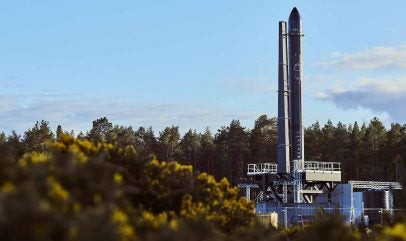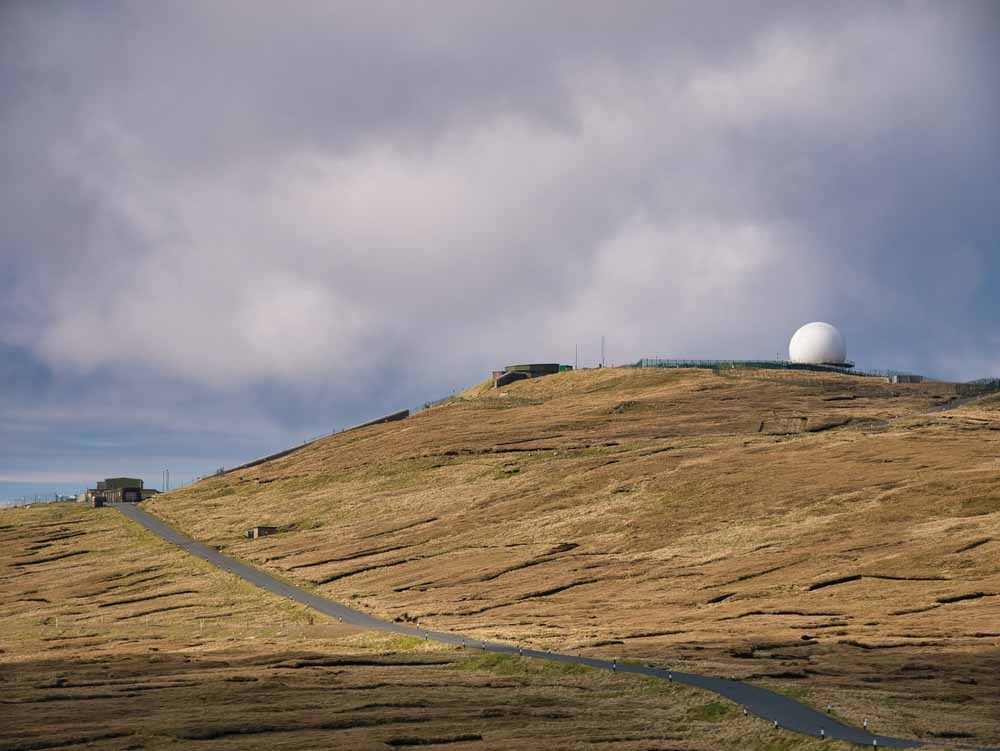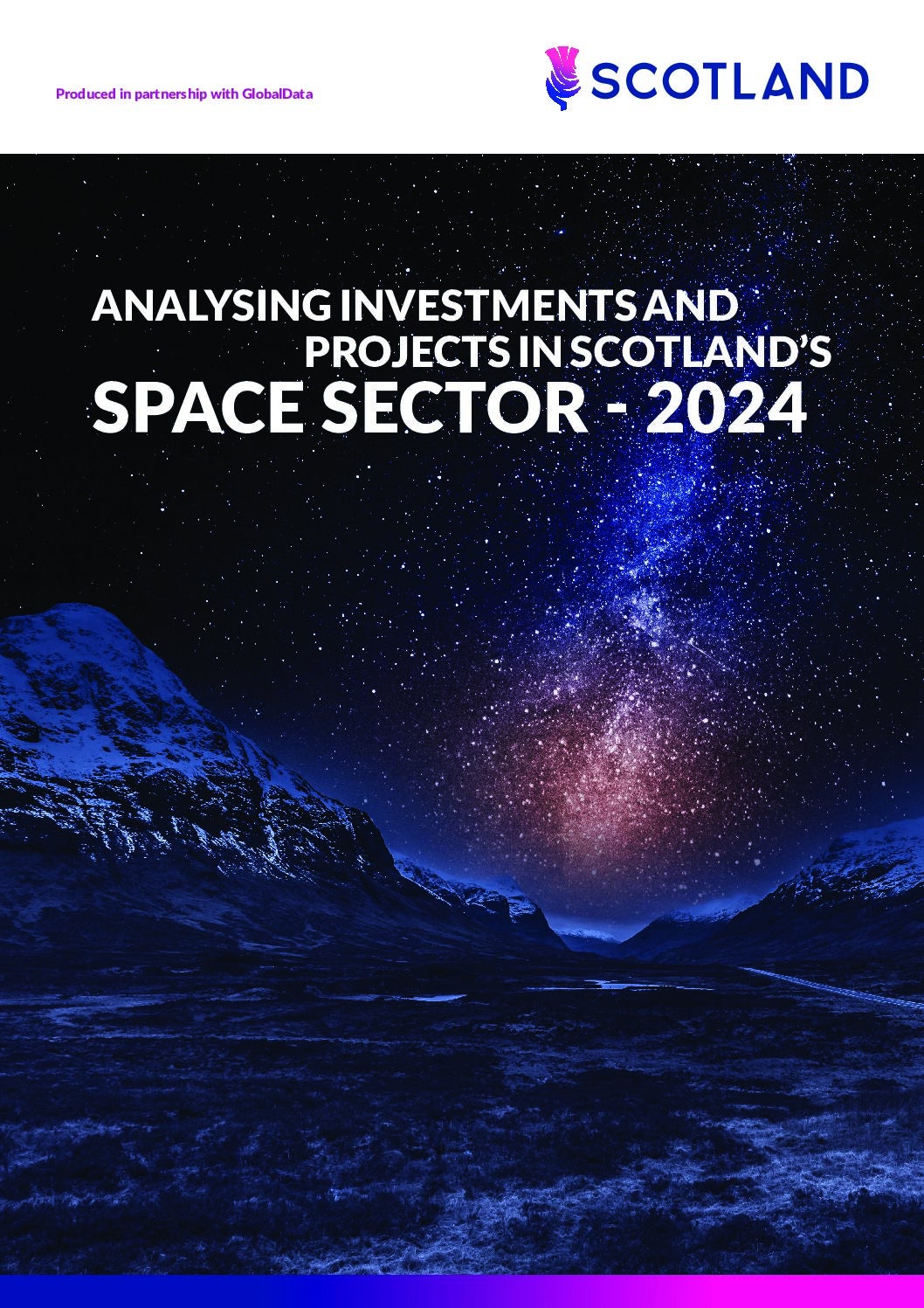
The rise in satellite manufacturing across the globe has led to a demand for launch capabilities current operators cannot provide. This has resulted in new market players in the launch sector, notably dedicated small satellite launch operations for low-Earth orbit (LEO).
There are currently no launch sites in mainland Europe with European launches by the ESA taking place in French Guiana, South America. Consequently, European agencies and businesses are seeking locations closer to home to reduce carbon footprints.

Building and establishing a spaceport is a considerable undertaking. Scotland is developing the necessary levels of expertise to meet demand and launch rockets carrying satellites vertically into orbit from Scottish soil. Scotland has five spaceports in development, with two sites providing orbital vertical launch capabilities that are highly sought after.
Sutherland Spaceport is being developed by rocket manufacturer Orbex and is set to be the world’s first carbon-neutral spaceport. While SaxaVord Spaceport is funded by a majority of private investment, potentially offering a business model for the future. The two remote sites also have considerable geographical advantages.
Both operators are now working towards their first vertical launches, with SaxaVord having already secured the vital Civil Aviation Authority (CAA) licence. With these two Scottish locations powering ahead, we learn more about the development process.
Sutherland Spaceport: carbon-neutral ambitions
Perched on the Scottish A’ Mhòine peninsula on the north-west mainland, Sutherland Spaceport offers a complete solution to placing small satellites into low-Earth orbit. The spaceport is being developed and will be operated by Scottish space company Orbex. The company aims to provide comprehensive end-to-end launch services, with satellites being deployed by the Orbex Prime microlauncher.
The business has already made several commercial agreements with satellite firms. According to economic impact assessments commissioned by Highlands and Islands Enterprise (HIE), the spaceport is estimated to be worth £1bn ($1.26bn) to the Highlands and Islands economy over the next three decades.
Appointed chief of spaceport operations with Orbex in August, Lesley Still arrived with a wealth of experience from working within the aviation and airports sector. Her job is to run the spaceport and manage all the services and facilities required to launch small satellites.
“For the spaceport itself, all the procedures and safeguards you would have in place to run an airport are the same – although the commodity is clearly very different,” says Still.
While the initial development of the site was led by HIE, Orbex took over in late-2022 with an ambition to become the first carbon-neutral spaceport in the world. Orbex has proposed changes that will further strengthen the eco-friendly design, including the reduction of building footprints and the size of the launch pad and access track.
Orbex’s environmentally friendly microlauncher, Orbex Prime, is designed to launch small satellites of up to 180kg into LEO. The launch vehicle is powered by ‘green’ bio-propane fuel, with a study by the University of Exeter showing that a single launch has up to 96% less carbon emissions than a comparable launcher. Additionally, the spaceport has received a £3.3m grant from the UK Space Agency to build the Ultra-Green Launch Complex at the site, including its ground support systems, to ensure any environmental impacts are minimised.
But it’s not just about reducing carbon in the air, it’s also about keeping it in the ground in the form of peat, which surrounds the site.
“We are building a floating road to ensure that it doesn’t damage the peat underneath,” says Still. “That’s tricky to do. But phase one of the road was completed just before Christmas. Phase two is underway. We hope to have the road up to the Launch Site Integration Facility, where we integrate the satellites, completed by the end of spring.”
The skills needed for a spaceport
Sutherland Spaceport is working with the CAA to ensure that licensing requirements are met. Once up and running, the spaceport will be a hub for the Scottish space industry. Sutherland will need both local and international expertise to help run it.
“I’m working very closely with the University of Highlands and Islands (UHI) and also the Aberdeen universities who run what’s known as a knowledge transfer partnership,” explains Still. “Effectively, this will give graduates the opportunity to come and work at the spaceport. We are also working with STEM representatives to develop courses that the university needs, not just in Scotland but across the UK, in a joint venture with UHI.”
The skills required for a spaceport extend beyond rocket engineers. Running a spaceport takes all kinds of skills, from project managers and supply chain partners to security and marketing. Still says that providing good jobs is all part of being a member of the Sutherland community.
“It’s a very close-knit community,” she says. “The land that the spaceport is built on is owned and managed by Melness Crofters’ Estate. They’re very keen to realise jobs in the area, and we already employ several local people. Additionally, there are other benefits. For example, we are investigating options for accommodation in the area.
“It’s an exciting time for the space industry, and for Scotland in particular,” says Still. “We’re fully focused on completing the spaceport to accommodate our first launch and I just can’t wait to see what the next five years brings.”

SaxaVord Spaceport: a potential business model for spaceports
What sets SaxaVord Spaceport in Shetland apart from many spaceports in the world is that it is currently funded by a majority of private investment, giving a glimpse into a potential business model for spaceports of the future.
Scott Hammond is deputy CEO of SaxaVord, with responsibilities that include leading on planning, environmental impact and spaceport design. Gaining the first CAA licence in Western Europe is ‘a massive step’ says Hammond, with SaxaVord now officially a working spaceport.
Alongside the vertical launch site at Lamba Ness, SaxaVord has a network of ground stations designed to download data from satellites, which pass overhead more often and for longer than at lower latitudes. Launching from Scotland, and Shetland in particular, means more economical and greener launches, explains Hammond, due to the high latitude position of Unst.
“It’s all to do with orbits and the way the Earth spins,” Hammond says. “When you want to go into polar orbit, you don’t want that spin – the more spin you have, the more you must counteract that with extra fuel.”
Unlike equator-based space launches, such as from Cape Canaveral, high-latitude launches allow polar orbits with a greater payload weight, as less fuel is expended fighting the planet’s natural spin.
“In Shetland, we can put up around 30% greater payload because of our high latitude and direct trajectories,” Hammond says. This can make launches more economical and reduce the carbon footprint.”
The economic benefits of a spaceport
Hammond is keen to emphasise the normalisation of satellite launches. Rocket stages can be delivered in standard containers using normal cargo routes and ferries, with no specialised supply chains required. “We want to get to the point where it’s the 9.30 sun-synchronous launch out of Shetland on a Monday, just as you may have a passenger plane slot at an airport,” he says.
Indeed, SaxaVord has customers such as US-based ABL Space Systems and Lockheed Martin already lined up for launches. The spaceport also accommodates other new technologies, with one start-up from France using the facilities for engine testing.
All this activity is driving investment throughout the local area, from teashops to schools. Historically, Unst has suffered from depopulation, mainly due to job losses when the nearby RAF station closed. However, engineering firms originally set up to support oil & gas can benefit hugely from the spaceport, as well as the need for more general business skills such as accountancy and HR, says Hammond.
SaxaVord maintains strong links with a space education working group in Shetland, involving agencies such as the Shetland Islands Council, the University of the Highlands and Islands, Developing the Young Workforce, and Skills Development Scotland. This offers opportunities for young people to learn more about the space industry through classes, Astronaut Job Camps, and Space 101 events. The group is also developing relationships with universities such as Strathclyde, supporting graduates and building relationships with talent who could be part of a future workforce.
SaxaVord has already invested around £40m in the local economy, says Hammond. This includes improving access roads and environmental projects such as tunnels for sea otters. Hammond also believes that there is a future role for ‘space tourism’ – with visitors watching space launches, as well as the native wildlife.
While the spaceport is continuing to develop, Hammond is confident about its first launch, scheduled for the second half of this year. “We will be ready,” he says.
With a combination of spaceports, engineering talent, satellite manufacturing, and space data expertise all available in Scotland, the country is strongly positioned to provide end-to-end capabilities for the space economy.
For more information on how the space sector is developing in Scotland, download the specially commissioned report below.



